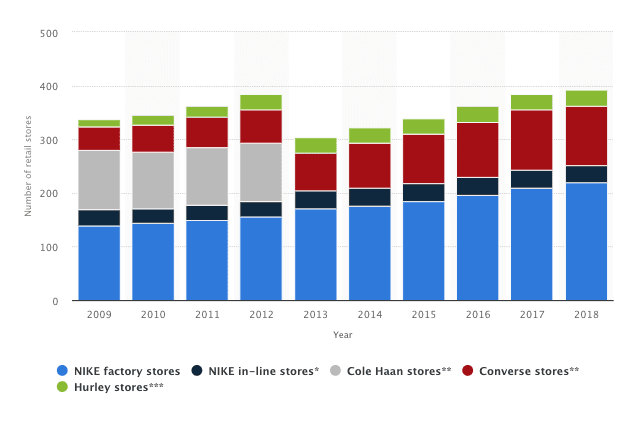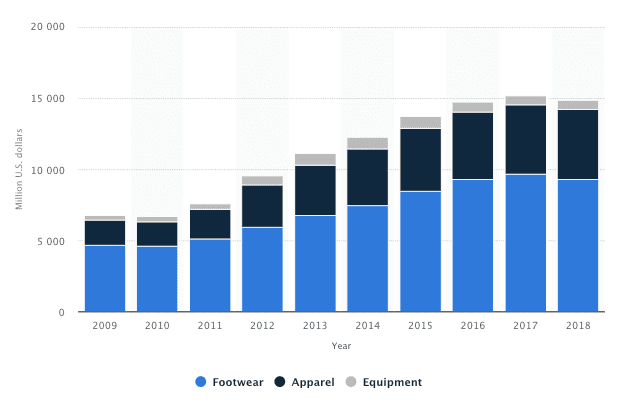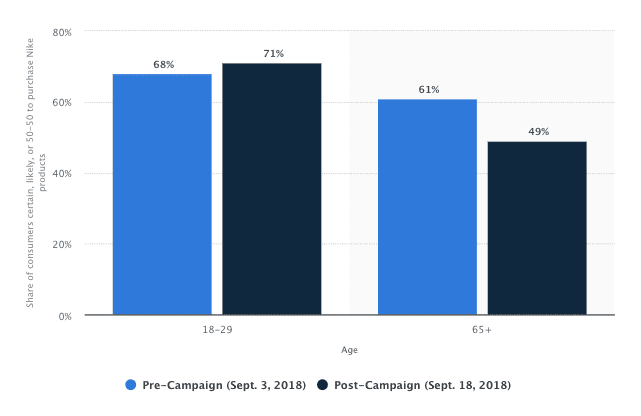
Updated: In April 2022, Bespoke Intelligence published a 98 page customer survey on the motivations to buy the product. It was commissioned while Peloton founder John Foley was still its Chief Executive. Peloton was still considered somewhat aspirational and high quality. The above snapshot of attributes of Peloton’s business is most likely different in January 2023. This report covers how the company once known for its good quality, convenience, and reliable service became something else. Within three months of this survey, the company’s media narrative centered around its hopeful return to form.
Turnarounds take time, especially when a company has lost 90% of its value in one calendar year.
As far as New Year’s resolutions go, the public perception is that Peloton is well on its way to recovery. You will hear stories of a surge in holiday season sales (the promotions maintained over November and December). As of publishing this, the stock seems to be performing like a company resurgent. “New year, new you”, as they say.
But the truth of the matter is that Peloton is operationally piecemeal. It’s a company-turned-fitness revolution that must find the fundamentals that is expected of any publicly traded hardware company. As of now, it is being propped up by its on-screen talent and the remnants of the marketing prowess that it once showed. The problem is that the company that was is still carrying the company that is. In what was my first coverage of Peloton in 2019, I raved about it in a report entitled “The Risk and Religion Of…“; in it, I explained:
[Pricing incentives] spell trouble for a company that will be largely defined by the best practices of fitness clubs and software-based network effects. Peloton will have a hard time explaining the supremacy of its product as the trial periods grow from one month to three or four. Or worse, when the $2,300 cycle that you paid for is on sale for $1,200 over the holiday season. Pricing incentives are a slippery slope.
We are now three years into those pricing incentives and well along a slippery slope that’s led to brand erosion, a 90% loss in value, countless layoffs, and the firing of its founding CEO. The Barry McCarthy era means a pivot away from the Peloton that was; the company was known for its sleek engineering, celebrity employees, and white glove delivery. Today, it’s a subscription product with hardware baggage. It owns very little of the process – from manufacturing to delivery. An August 2022 CNBC report explained:
When McCarthy took over the CEO role from the company’s founder, John Foley, he has said he didn’t realize how deep some issues ran. Now, McCarthy is slashing costs and trying to grow higher-margin subscription revenue so that it outpaces hardware sales.
For the Netflix and Spotify alum to run the company the way he wants, the core must be focused on a well-marketed subscription product. The problem is that Peloton was, once upon a time, a well-marketed subscription to a luxury product. Today, the Peloton order-to-delivery process resembles very little of what it did just two years prior. Peloton desires to be a media company but until mid-2022 it’s spent the majority of its money on manufacturing, logistics, and software development. By outsourcing every little thing it could, the company has lost its soul.
I put this theory to the test over this holiday season.
After comparing to two NordicTrack models (2450, X22i), a Sole F85, and a Horizon 7.8 AT, I surveyed the product landscape and landed on the Peloton Tread for purchase. I visited one of the remaining Peloton stores and tested it. A remarkable machine, it feels like a subscription-subsidized investment. When built, it’s sleek and durable. It almost seems too good to be true. For many consumers, this doesn’t present much of an issue. But for anyone who’s followed Peloton’s previous year, you ask yourself: “Will this company exist in 365 days?”
A hardware purchase should never feel like a risky bet but this one did. With a (perpetually available) $500 discount, I ended up ordering mine from the recently announced Dick’s Sporting Goods partnership. A September 2022 CNBC report summarized the high points of this partnership:
Dick’s will carry Peloton’s Bike, Bike+, Tread and Guide, a training system that uses a camera to track a person’s movements, as well as bike shoes and exercise mats, the companies announced Thursday. The products will be in specific Peloton displays and Dick’s employees will be trained to assist customers with them. Dick’s shoppers also will be able to order Peloton products online in stores for either delivery or pickup.
It’s also of note that Amazon carries an assortment of Peloton’s products, but not the treadmill. The idea was that Dick’s fulfillment process would be more trusted than Peloton’s. But the breakdown began with this assumption.
When you purchase a Peloton Tread, you are placed in a queue to hear from the ordering system at Peloton as if you ordered the product directly from them. There is not a separate system. Dick’s is just an acquisition channel, they are not actually carrying any of Peloton’s large products (cycles, treadmills, rowers). In previous years, a Peloton employee would be at your door within one to two weeks with your product for a professional installation process. This is the new Peloton, however, and timing is more like two to four weeks out for delivery. The Peloton professional is now a cross-trained, RXO delivery person
Upon confirming my delivery date with Peloton (purchased on December 15 and scheduled for delivery on January 6), I prepared the space for arrival and awaited that magical experience that the new CEO would love to read about – via collected customer feedback – in his monthly net promoter score (NPS) report. Instead, the slashed costs and outsourced core competencies ran rampant.
The morning of the delivery, I received this text message from an unknown number. It was an employee of RXO (formerly XPO Logistics). Confused, I called the number only to hear the gentleman explain “You don’t want this treadmill.” Confused, I agreed. So, I then called Peloton’s customer service line to relay as much. Their response: “RXO is wrong, your order is scheduled for delivery.” I’d never seen this before. A purchase from Dick’s Sporting Goods, an interfacing with the product’s company, to be constructed and third-party delivered by a fresh corporate entity that Peloton neither owns nor maintains much leverage over. The response is below:

Once I was done with this exchange, I informed the gentleman who texted me from an RXO warehouse and let him know that Peloton cited an apparent “error” and to just bring it on out. He didn’t argue one bit, but he wanted to and I now understand why. His response: “Yes sir.”
Arriving just an hour later, the RXO driver began staging the parts in the garage and – once situated – I stepped inside only to realize that the work stopped within 10 minutes. They packed up to leave with a treadmill just partially constructed. I ran out to the departing truck to question why (and how) they could leave under those circumstances.
Naturally, a discussion ensues. He’s on the phone with his manager and I am on the phone with Peloton. The two RXO delivery men want to leave the half-built Peloton Tread there (it weighs 290 lbs, to be fair) and they inform me that my best option is to “call Peloton to send someone out over the next month.” While this isn’t optimal for the customer, it is a natural consequence of Peloton’s lack of command over its business. There are no options.
But when I show the RXO contractor the email from Peloton, he’s confused. He believes that I wasted his time by having the men deliver a product that they claimed was defective. I assumed that an official email from Peloton was legitimate, so I discounted the observation of RXO’s contractors (at my own peril). Peloton’s service line and email responses were indicative of the fact that completing the sale (profitably) is the entirety of the new Peloton’s mission.
The curse of outsourcing everything is that you cede your control to every subcontractor, leaving the brand vulnerable to consumer exposure to subcontractors and partners that care much less about the outcome. Over the course of seven days, Dick’s Sporting Goods, Peloton, and RXO were a cycle of conversations. The final suggestion was from the outsourced call center who suggested a free heart rate monitor. This was the compensation for a product order that would arrive 45 days post-purchase to no fault of the consumer’s.
To better understand the frequency of this sort of issue, I dove into subreddits like “Beware of XPO delivery.” Within the damaged box was a manufacturing defect, a double-whammy of sorts. To no fault of the delivery men, they’d have to deconstruct the base of the treadmill to attempt to address the issue.
It’s unlikely that this frequency of manufacturing defect existed before the outsourced manufacturing deal with Rexon but even I was surprised to hear from the RXO contractor: “This happens all the time.” Marketing a product as premium can only do so much when every facet of the business seems less than.
Peloton is sacrificing every aspect of its business with the hope that the content business can drive loyalty despite the rest. In FY 2022, the subscription division generated $1.4 billion with a 67% gross margin. That’s $1 billion in gross profit for the group. But then there’s the cost of acquisition and the (until recently) out of control SG&A inspired by the former CEOs lavish habits.
Turnarounds take time. Peloton will likely report increased demand over its final months of 2022. Company officials will highlight cost savings and the successful streamlining of operations by way of outsourced manufacturing, outsourced acquisition, and outsourced delivery. But it was one of the call center operator, on my seventh call with Peloton, who tried to convince me that he was calling from Peloton’s New York office. I asked to speak to any call center representative who could provide any further insight on the breakdown in communication or the defective treadmill delivered to RXO’s warehouse in its partially deconstructed box. He pointed me to the customer service teams at Dick’s Sporting Goods. There’s no new delivery date for the Tread and very little recourse in the meantime.
A Peloton turnaround is possible, just not like this.
Update: After 45 days of waiting, Peloton’s delivery partner (RXO) sent an automated update via text message alerting me that the delivery would be delayed another 14-21 days. As such, I cancelled the order. In short, Peloton is having issues delivering its hardware. The recent earnings call shed a bit of light on this. CEO Barry McCarthy spoke with CNBC on this matter:
CEO Barry McCarthy told investors Wednesday he doesn’t care that the company is losing money on its Bike, Tread and Row equipment. The business’s “path to the promised land,” he said, is its mobile app. Peloton posted negative margins during the holiday quarter for its pricey connected fitness products, but McCarthy said he’s more concerned with aggregate margins, which were in the positive thanks to the company’s subscription revenue.
The company is prioritizing subscriptions at the risk of turning off old and new customers looking for the hardware to take part in many of its classes. The stock is up 23% in the last seven days and the company is trading at a $5.5 billion cap at the writing of this update. I don’t believe that subscription-first is a sustainable model for Peloton. The market will decide, either way.
By Web Smith | Edited by Hilary Milnes with art by Alex Remy







